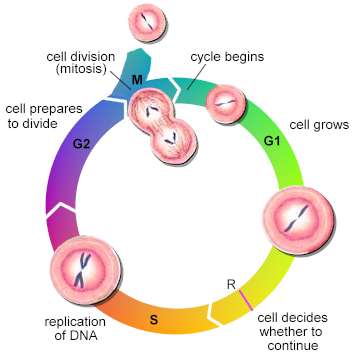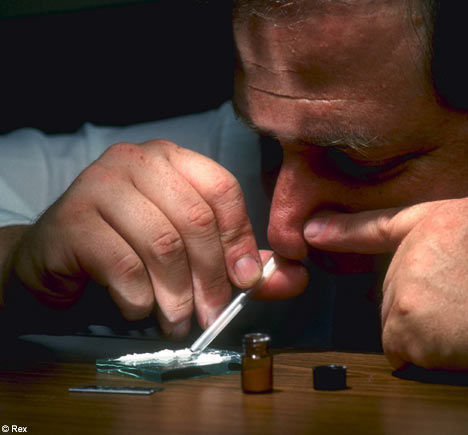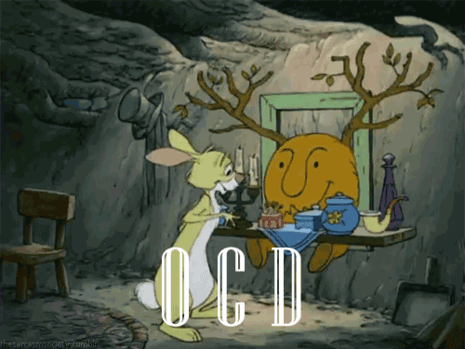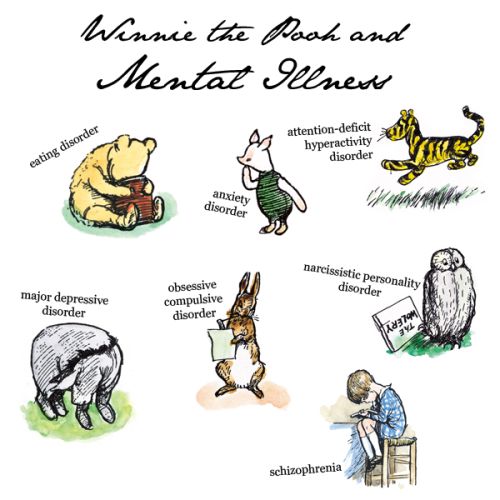The art of medicine consists in amusing the patient while nature cures the disease. Voltaire (1694 - 1778)
31 January 2012
The Cell Cycle Clock and Cancer
The cell cycle clock represents a normal cell life in four main stages.
Stage 1 Gap 1 (G1): the cell increases in size, and prepares to copy the DNA contained in its nucleus.
Stage 2 Synthesis (S): the chromosomes of the cell are replicated
Stage 3 Gap 2 (G2): the cell prepares for mitosis
Stage 4 Mitosis (M): the mother cell divides into two daughter cells, each containing a complete set of chromosomes. The two daughter cells immediately enter the G1 stage to continue the cycle.
Restriction point (R): a molecular switch which determines whether the cell continues the cell cycle, enters the G0 state (senescence) or undergoes apoptosis - programmed cell death. There are two classes of genes that play a major role in triggering cancer. Cells in the human body can only survive when their 'area code' where the cell is compatible with the code of the surrounding cells and the extra-cellular matrix. Therefore, normal cells die by apoptosis if they try to leave their cell structure. This is known as anchorage dependence. Proteins produced by oncogenes in cancer cells trick the nucleus by making it seem that the cell is attached to the correct region, while it is actually not. This allows cancer calls to migrate freely throughout the human body via the blood circulation system
30 January 2012
Speed
Speed is the street name for a range of drugs called amphetamines – including amphetamine sulphate, dexedrine and dexamphetamine. Like cocaine, amphetamines are stimulants that people take to keep them awake and alert.
Amphetamines have been used in wars to help keep soldiers alert and they were once the main ingredient in diet pills, because they stop people feeling hungry. Some amphetamines are used in medicine, for example, Ritalin is used to treat Attention Deficit Hyperactivity Disorder.
Effects
- Speed makes people feel wide awake, excited and chatty.
- People take it because it gives them the energy to do things for hours without getting tired, things like dancing, talking, and going out.
- It can though make people overactive, agitated or even acutely psychotic.
- The high is generally followed by a long slow comedown, making you feel really irritable and depressed.
- Speed puts a strain on your heart – some users have died from overdoses.
It is a class B drug. You may be charged with possession if you have a small amount of amphetamine on you. However, the more you have the less likely it is to be for your own use and you may be charged with possession with intent to supply. The penalty for possession with intent to supply is jail and/or a large fine.
29 January 2012
Methamphetamine
Also known as meth, crystal and ice, methamphetamine stimulates the brain and nervous system in a similar way to cocaine and speed, but with a stronger and longer lasting effect. It can be made relatively easily from a simple recipe and a meth-lab, taking around 6 to 8 hours using ingredients such as ether, benzene, methanol and hydrochloric acid.
Effects
Effects
- Feeling very up, excited, alert and awake
- Agitation, paranoia, confusion and aggressiveness
- Decrease in appetite
Methamphetamine use has a high association with depression and suicide, as well as serious heart disease, amphetamine psychosis. It is extremely addictive, neurotoxic and is associated with an increased risk of Parkinson's disease.
28 January 2012
Ecstasy
The synthetic chemical 3,4-methylenedioxy-n-methylamphetamine (also known as XTC, E, beans and rolls) is seen as the original 'designer drug' due to its close link to dance music culture in the late 80s. Clubbers took this energy-boosting drug to dance for hours thanks to its short 'kick in' time and long lasting effects of up to 3 to 6 hours.
Effects
Effects
- Energy buzz
- Feeling very alert and alive
- Heightened senses
- Increased sociability
- Increased talkativeness
Risks
Lysergic acid diethylamide
Lysergic acid diethylamide (LSD) is a powerful hallucinogenic commonly known as acid. LSD stimulates centers of the sympathetic nervous system in the midbrain, which leads to pupillary dilation, increase in body temperature, and rise in the blood-sugar level. LSD also has a serotonin-blocking effect.
Although most LSD trips include both pleasant and unpleasant aspects, the drug's effects are unpredictable and may vary with the amount ingested and the user's personality, mood, expectations, and surroundings.
Users of LSD may experience some physiological effects, such as:
Increased blood pressure and heart rate
Dizziness
Loss of appetite
Dry mouth
Sweating
Nausea
Numbness
Tremors
However, the drug's major effects are emotional and sensory. The user's emotions may shift rapidly through a range from fear to euphoria, with transitions so rapid that the user may seem to experience several emotions simultaneously.
Although most LSD trips include both pleasant and unpleasant aspects, the drug's effects are unpredictable and may vary with the amount ingested and the user's personality, mood, expectations, and surroundings.
Users of LSD may experience some physiological effects, such as:
Increased blood pressure and heart rate
Dizziness
Loss of appetite
Dry mouth
Sweating
Nausea
Numbness
Tremors
However, the drug's major effects are emotional and sensory. The user's emotions may shift rapidly through a range from fear to euphoria, with transitions so rapid that the user may seem to experience several emotions simultaneously.
26 January 2012
Cannabis
Marijuana, spliff, weed, pot... the most widely-used illegal drug in Britain. It is naturally occurring from the cannabis plant containing tetrahydrocannabinol which makes you feel very chilled out, happy and relaxed. It also makes you hallucinate and alter your senses.
There's increasing evidence that cannabis use is linked to a number of health risks. It damages the ability to concentrate, decreases motivation and more than occasional use in teenagers can affect psychological development. Users can become anxious, suspicious and even paranoid. Heavy use increases the risk of serious psychiatric illness.
Cannabis is a class B drug and so penalties for possession of it can be severe.
There's increasing evidence that cannabis use is linked to a number of health risks. It damages the ability to concentrate, decreases motivation and more than occasional use in teenagers can affect psychological development. Users can become anxious, suspicious and even paranoid. Heavy use increases the risk of serious psychiatric illness.
Cannabis is a class B drug and so penalties for possession of it can be severe.
25 January 2012
Cocaine
Powder cocaine, known as coke and crack, are powerful stimulants that give a powerful high.
Effects
Effects
- Boosts confidence, concentration and makes you feel more awake. This may cause you to take very careless risks.
- Increases body temperature and heart rate, reduces your appetite.
- When the effects wear off, the user experiences a 'comedown' where the feel depressed.
90% of the world's cocaine are made in 'coke kitchen' deep in the south american jungle. They are made from coca leaves, which are crushed and then processed with petrol. It affects the body by increasing dopamine secretion, a natural 'reward' chemical, flooding the brain's receptors making the system hyperactive.
24 January 2012
Psilocybin Mushrooms
More commonly known as magic mushrooms, shrooms, blue meanies, boomers, mushies, liberty caps and cubes, today's post is about the psilocybin/ psilocin containing fungi that have given people mild trips for many years.
Effects
Effects
- Colours, sounds and objects appear distorted
- Sense of time and movement speed up/ slows down
- User feels disoriented, tired or sick
Consuming magic mushrooms causes twitching, sickness, drowsiness, low blood pressure, dizziness, salivation and could lead to a coma. Also, the mushroom may have been mistaken for a poisonous look-alike.
Types
The two main types of magic mushrooms in the UK are Psilocybe cubensis (left) and Psilocybe semilanceata (right).
The maximum penalty for possession is 7 years in prison and life for supply. You can get an unlimited fine for both. Mushrooms or any fungus containing psilocin or an ester of psilocin have been brought under the Misuse of Drugs Act and are now class A. This came into force July 18 2005. Mushrooms are not dealt with in the black market to any great extent at the moment. Indications show that quantities of around 30 mushrooms, if and when they are sold, sell for around £5 per bag. These prices are merely indicative and do not represent a recognised street price.
23 January 2012
Epigenetics - was Lamarck right all along?
Epigenetics is the study of heritable changes in gene expression or cellular phenotype caused by mechanisms other than changes in the underlying DNA sequence. It is an idea that genes have a 'memory' and that the lives of your grandparents can directly affect you decades later. It proposes a control system of 'switches' that turn genes on or off and suggests that an individual's experience during their lifetime such as nutrition and stress can control these switches, causing heritable effects in humans.
After the tragic events of September 11th 2001, Rachel Yehuda, a psychologist at the Mount Sinai School of Medicine in New York, studied the effects of stress on a group of women who were inside or near the World Trade Center and were pregnant at the time. Produced in conjunction with Jonathan Seckl, an Edinburgh doctor, her results suggest that stress effects can pass down generations. Meanwhile research at Washington State University points to toxic effects – like exposure to fungicides or pesticides – causing biological changes in rats that persist for at least four generations.
Jean-Baptiste Lamarck was a French naturalist, soldier and biologist who is most well known for Lamarckian evolution, a 200-year old theory that has been largely dismissed. His theory suggested that acquired characteristics can be passed onto offspring e.g. as a giraffe reached for taller branches, their neck stretched, which made their offspring have a slightly longer necks. It is true giraffe's necks did not evolve this way, however, according to epigenetics, acquired information can be passed to the next generation. Not by the information encoded in the DNA, but instead, the molecules that are involved in decoding the DNA message. For example, chicken given an unpredictable food supply produced offspring that were better capable of such unpredictability.
After the tragic events of September 11th 2001, Rachel Yehuda, a psychologist at the Mount Sinai School of Medicine in New York, studied the effects of stress on a group of women who were inside or near the World Trade Center and were pregnant at the time. Produced in conjunction with Jonathan Seckl, an Edinburgh doctor, her results suggest that stress effects can pass down generations. Meanwhile research at Washington State University points to toxic effects – like exposure to fungicides or pesticides – causing biological changes in rats that persist for at least four generations.
Jean-Baptiste Lamarck was a French naturalist, soldier and biologist who is most well known for Lamarckian evolution, a 200-year old theory that has been largely dismissed. His theory suggested that acquired characteristics can be passed onto offspring e.g. as a giraffe reached for taller branches, their neck stretched, which made their offspring have a slightly longer necks. It is true giraffe's necks did not evolve this way, however, according to epigenetics, acquired information can be passed to the next generation. Not by the information encoded in the DNA, but instead, the molecules that are involved in decoding the DNA message. For example, chicken given an unpredictable food supply produced offspring that were better capable of such unpredictability.
22 January 2012
Vitamin D - may stop sight loss
According to The Independent, boosting vitamin D intake could help to prevent age-related diseases, in particular loss of vision and blindness. This widely reported news story centres on research in which “middle-aged” mice were treated for six weeks with vitamin D. The researchers examined the mice’s vision and looked for signs of inflammation in their eyes and whether proteins associated with normal ageing had built up. The accumulation of these proteins and inflammation can increase the risk of people developing age-related macular degeneration (AMD), a major cause of blindness in people aged over 50 in countries such as the UK. The researchers found that there was less inflammation and build-up of the protein amyloid beta in the retinas of mice treated with vitamin D.
However, the researchers did not specifically look at a mouse model of AMD and this study has limited relevance to humans. Therefore, it’s not possible to say, based on the study’s results, whether vitamin D has any effect on age-related vision loss or AMD in humans.
21 January 2012
Statins to cure cancer?
Statins are drugs which lower the level of ‘bad cholesterol’in your body. Cholesterol is essential for your body to work well, but too much ‘bad cholesterol’ (low-density lipoprotein or LDL) is unhealthy as they help to transport multiple different fat molecules, within the water around cells and within the bloodstream.
High levels of ‘bad cholesterol’ in your blood can lead to fatty deposits building up in your arteries, leading to an atheroma. This can increase your risk of developing cardiovascular disease which includes conditions such ascoronary heart disease (angina and heart attack) and stroke.
An article by the Daily Express has suggested that a daily dose of statins have shown to block the growth and spread of tumors based on a laboratory research into the role of a genetic mutation in the development of breast cancer using cell cultures at Columbia University. During the experiment, cells generated from breast cancer tumors carrying the mutation were grown. The researchers then interfered with the effects of the genetic mutation, to find that around half the cells reverted back to normal, non-cancerous structures. They explored this phenomenon further by identifying how this gene affects the cells, and found that simvastatin, one type of statin, reduced cancer cell growth and increased cancer cell death.
20 January 2012
Drug resistant TB in India
Recently, there were 12 confirmed cases of a strain of tuberculosis that is resistant to all existing TB drugs, in Mumbai, India. Reported by Zarir Udwadia of the Hinduja National Hospital and Medical Research Centre in Mumbai.
What is TB?
TB is short for tuberculosis, a bacterial infection spread by inhalation of tiny droplets of saliva from the coughs/ sneezes of an infected individual causes by mycobacterium tuberculosis and mycobacterium bovis. TB mainly affects the lungs (pulmonary tuberculosis), but can spread to many parts of the body including bones and nervous system, which is fatal. Symptoms include persistent coughing, weight loss due to loss of appetite and night sweats.
When your immune system is not strong enough to kill the bacteria, it builds a defensive barrier around the infection and divides in plentiful supply of oxygen. This is known as the primary infection where very little symptoms are seen. Secondary infection occurs when the TB bacteria re-emerges and destroys lung tissues.
The emergence of the disease in such a densely populated city is a major concern as it will be transmitted easily and so the worry is that TB may become incurable again, and patients will have to reply on their immune system rather than medical intervention.
What is TB?
TB is short for tuberculosis, a bacterial infection spread by inhalation of tiny droplets of saliva from the coughs/ sneezes of an infected individual causes by mycobacterium tuberculosis and mycobacterium bovis. TB mainly affects the lungs (pulmonary tuberculosis), but can spread to many parts of the body including bones and nervous system, which is fatal. Symptoms include persistent coughing, weight loss due to loss of appetite and night sweats.
When your immune system is not strong enough to kill the bacteria, it builds a defensive barrier around the infection and divides in plentiful supply of oxygen. This is known as the primary infection where very little symptoms are seen. Secondary infection occurs when the TB bacteria re-emerges and destroys lung tissues.
The emergence of the disease in such a densely populated city is a major concern as it will be transmitted easily and so the worry is that TB may become incurable again, and patients will have to reply on their immune system rather than medical intervention.
19 January 2012
Disrupted body clock may prime you for schizophrenia (New Scientist)
This is a summary of an article published today on 'New Scientist' that relates to my previous post on schizophrenia. It suggests that schizophrenia may be a profound form of jetlag in which the brain's central clock runs out of kilter with peripheral clocks around the rest of the body. A genetic mutation was found that triggers schizophrenia-like symptoms in mice, which also disrupted their circadian rhythm (body clock). This was tested by keeping the affected mice under a schedule of 12 hours of light, followed by 12 hours of darkness.
The rhythm is maintained by a patch of brain tissue called the suprachiasmatic nucleus (SCN), which gathers information about light from the eye, and relays it to the rest of the body by proteins, allowing bodily functions to be co-ordinated. The findings from the mice experiment suggests that the development of therapeutic agents to normalise SCN signalling in schizophrenic patients may improve their quality of life and longetivity.
The rhythm is maintained by a patch of brain tissue called the suprachiasmatic nucleus (SCN), which gathers information about light from the eye, and relays it to the rest of the body by proteins, allowing bodily functions to be co-ordinated. The findings from the mice experiment suggests that the development of therapeutic agents to normalise SCN signalling in schizophrenic patients may improve their quality of life and longetivity.
18 January 2012
Christopher - Schizophrenia
- Paranoid schizophrenia: The individual is preoccupied with one or more delusions or many auditory hallucinations but does not have symptoms of disorganized schizophrenia.
- Disorganized schizophrenia: Prominent symptoms are disorganized speech and behavior, as well as flat or inappropriate affect. The person does not have enough symptoms to be characterized as suffering from catatonic schizophrenia.
- Catatonic schizophrenia: The person with this type of schizophrenia primarily has at least two of the following symptoms: difficulty moving, resistance to moving, excessive movement, abnormal movements, and/or repeating what others say or do.
- Undifferentiated schizophrenia: This is characterized by episodes of two or more of the following symptoms: delusions, hallucinations, disorganized speech or behavior, catatonic behavior or negative symptoms, but the individual does not qualify for a diagnosis of paranoid, disorganized, or catatonic type of schizophrenia.
- Residual schizophrenia: While the full-blown characteristic positive symptoms of schizophrenia (those that involve an excess of normal behavior, such as delusions, paranoia, or heightened sensitivity) are absent, the sufferer has a less severe form of the disorder or has only negative symptoms (symptoms characterized by a decrease in function, such as withdrawal, disinterest, and not speaking).
Causes
The causes aren't known for sure but is likely that a combination of several different factors may have an effect.
- Genetic links - one in ten people with schizophrenia has a parent with the condition.
- Damage to the brain during pregnancy or birth.
- Use of recreational drugs, including ecstasy, LSD, amphetamines (speed), cannabis and crack.
- Stress.
Symptoms
Symptoms that represent a change in behaviour, or thoughts are called ‘positive’ symptoms. These include:
- Delusions - believing something completely even though others find your ideas strange and can't work out how you've come to believe them.
- Difficulty thinking – finding it hard to concentrate, drifting from one idea to another. Other people may find it hard to understand you.
- Feeling controlled – feeling as though your thoughts are vanishing, that they‘re not your own, or that your body is being taken over and controlled by someone else.
- Hallucinations - hearing, smelling, feeling or seeing something that isn’t there. Hearing voices is the most common problem. The voices can seem utterly real. Although they may be pleasant, they are more often rude, critical, abusive or annoying.
Loss of normal thoughts, feelings or actions are known as ‘negative’ symptoms. They include:
- Loss of interest, energy and emotions. You don't bother to get up or go out of the house. You don't get round to routine jobs like washing, tidying, or looking after your clothes. You feel uncomfortable with other people.
- Some people hear voices without negative symptoms. Others have delusions but few other problems. If someone has only muddled thinking and negative symptoms, the problem may not be recognised for years.
17 January 2012
Owl - Narcissistic personality disorder
Narcissistic personality disorder is a mental disorder in which people have an inflated sense of their own importance and a deep need for admiration. Those with narcissistic personality disorder believe that they're superior to others and have little regard for other people's feelings. But behind this mask of ultra-confidence lies a fragile self-esteem, vulnerable to the slightest criticism.
Symptoms
In order for a person to be diagnosed with narcissistic personality disorder (NPD) they must meet five or more of the following symptoms:
- Has a grandiose sense of self-importance (e.g., exaggerates achievements and talents, expects to be recognized as superior without commensurate achievements)
- Is preoccupied with fantasies of unlimited success, power, brilliance, beauty, or ideal love
- Believes that he or she is "special" and unique and can only be understood by, or should associate with, other special or high-status people (or institutions)
- Requires excessive admiration
- Has a very strong sense of entitlement, e.g., unreasonable expectations of especially favorable treatment or automatic compliance with his or her expectations
- Is exploitative of others, e.g., takes advantage of others to achieve his or her own ends
- Lacks empathy, e.g., is unwilling to recognize or identify with the feelings and needs of others
- Is often envious of others or believes that others are envious of him or her
- Regularly shows arrogant, haughty behaviors or attitudes
Narcissistic personality disorder is typically diagnosed by a trained mental health professional, such as a psychologist or psychiatrist. There are no laboratory, blood or genetic tests that are used to diagnose personality disorder. Many people with narcissistic personality disorder don't seek out treatment. People with personality disorders, in general, do not often seek out treatment until the disorder starts to significantly interfere or otherwise impact a person's life. This most often happens when a person's coping resources are stretched too thin to deal with stress or other life events.
Treatment of narcissistic personality disorder typically involves long-term psychotherapy with a therapist that has experience in treating this kind of personality disorder. Medications may also be prescribed to help with specific troubling and debilitating symptoms.
16 January 2012
Rabbit - OCD
Obsessive-compulsive disorder is an anxiety disorder characterized by intrusive thoughts that produce uneasiness, apprehension, fear, or worry, by repetitive behaviors aimed at reducing the associated anxiety, or by a combination of such obsessions and compulsions.... hence the name. It is estimated that up to 3% of adults and 5% of children and teenagers have OCD.
Symptoms
Most people with OCD generally fall into a set pattern or cycle of thought and behaviour. This pattern has four main steps:
Obsession – your mind is overwhelmed by a constant obsessive fear or concern, such as the fear that your house will be burgled.
Anxiety – this obsession provokes a feeling of intense anxiety and distress.
Compulsion – you then adopt a pattern of compulsive behavior to reduce your anxiety and distress, such as checking that all your windows and doors are locked at least three times before leaving your house.
Temporary relief – the compulsive behavior brings temporary relief from anxiety, but the obsession and anxiety soon return, causing the pattern or cycle to begin again.
Treatment
Cognitive behavioral therapy - involving graded exposure and response prevention has repeatedly proved to be an effective treatment for OCD.
Medication - You may be prescribed medication if CBT fails to treat mild OCD or if you have moderate or severe OCD. The different types of medication that you may be prescribed are discussed below.
15 January 2012
Eeyore - Major depressive disorder
Eeyore is a favourite amongst most admirers of Winnie the Pooh characters and he is an unbelievably lovable donkey who is dismally gloomy for almost eternity. Depression may be described as feeling sad, blue, unhappy, miserable, or down in the dumps. Most of us feel this way at one time or another for short periods. True clinical depression is a mood disorder in which feelings of sadness, loss, anger, or frustration interfere with everyday life for weeks or longer.
Researchers believe it is caused by chemical changes in the brain due to a problem with the genes, or triggered by stressful events. Symptoms include...
- Agitation, restlessness, and irritability
- Dramatic change in appetite, often with weight gain or loss
- Very difficult to concentrate
- Fatigue and lack of energy
- Feelings of hopelessness and helplessness
- Feelings of worthlessness, self-hate, and guilt
- Becoming withdrawn or isolated
- Loss of interest or pleasure in activities that were once enjoyed
- Thoughts of death or suicide
- Trouble sleeping or excessive sleeping
Treatments
- Wait and see
- Exercise
- Self help groups
- Talking therapy
- Antidepressants
- Mental health teams
14 January 2012
Tigger - ADHD
Attention deficit hyperactivity disorder, the most common behavioral disorder in the UK, affecting around 3~9% of young people, and 2% of adults.
Symptoms - Children/Teens
Inattentiveness- The main symptoms of inattentiveness are:
- a very short attention span
- being very easily distracted
- making careless mistakes, for example in schoolwork
- appearing forgetful or losing things
- being unable to stick at tasks that are tedious or time consuming
- being unable to listen to or carry out instructions
- being unable to concentrate
- constantly changing activity or task
- having difficulty organising tasks
Hyperactivity - The main symptoms of hyperactivity are:
- being unable to sit still, especially in calm or quiet surroundings
- constantly fidgeting
- being unable to settle to tasks
- excessive physical movement
- excessive talking
Impulsiveness - The main symptoms of impulsiveness are:
- being unable to wait for a turn
- acting without thinking
- interrupting conversations
- breaking any set rules
- little or no sense of danger
Symptoms - Adults
- carelessness and lack of attention to detail
- continually starting new tasks before finishing old ones
- poor organisational skills
- inability to focus or prioritise
- continually losing or misplacing things
- forgetfulness
- restlessness and edginess
- difficulty keeping quiet and speaking out of turn
- blurting responses, and poor social timing when talking to others
- often interrupting others
- mood swings
- irritability and a quick temper
- inability to deal with stress
- extreme impatience
- taking risks in activities, often with little or no regard for personal safety or the safety of others
As with ADHD in children and teenagers, ADHD in adults can appear alongside many related problems or conditions. One of the most common conditions is depression. Other conditions that adults may have alongside ADHD include:
- personality disorders
- bipolar disorder, a condition that affects your moods, which can swing from one extreme to another
- obsessive-compulsive disorder, a condition that causes obsessive thoughts and compulsive behaviour, such as cleaning constantly
Treatment
- Methylphenidate - stimulates a part of the brain that changes mental and behavioral reactions
- Dexamfetamine - psycho/CNS stimulant
- Atomoxetine - selective nor-adrenaline uptake inhibitor
- Psychotherapy
- Behaviour therapy
- Social skills training
- Cognitive behavioral therapy
13 January 2012
Piglet - Anxiety disorder
Anxiety disorder is a pattern of frequent, constant worry and anxiety over many different activities and events. Surveys have found that as many as 18% of Americans may be affected. Anyone can develop this disorder, kids through to adults, however, it is often more often seen in women than in men. The main risk factors are genes and stress levels.
Symptoms
Constant presence of worry or tension, even with little/ no cause. Worry 'floating' from one problem onto another. Unable to control worries and fears, face difficulties concentrating, often feel fatigued, irritated, problems with sleep and restlessness.
Treatment
The goal of treatment is to help you function well during day-to-day life. A combination of medicine and cognitive-behavioral therapy (CBT) works best.
Medications are an important part of treatment. Once you start them, do not suddenly stop without talking with your health care provider. Medications that may be used include:
- Selective serotonin reuptake inhibitors (SSRIs) are usually the first choice in medications. Serotonin-norepinephrine reuptake inhibitors (SNRIs) are another choice.
- Other antidepressants and some antiseizure drugs may be used for severe cases.
- Benzodiazepines such as alprazolam (Xanax), clonazepam (Klonopin), and lorazepamAtivan) may be used if antidepressants don't help enough with symptoms. Long-term dependence on these drugs is a concern.
- A medication called buspirone may also be used.
Cognitive-behavioral therapy helps you understand your behaviors and how to gain control of them. You will have 10 to 20 visits over a number of weeks. During therapy you will learn how to:
- Understand and gain control of your distorted views of life stressors, such as other people's behavior or life events.
- Recognize and replace panic-causing thoughts, decreasing the sense of helplessness.
- Manage stress and relax when symptoms occur.
- Avoid thinking that minor worries will develop into very bad problems.
Avoiding caffeine, illicit drugs, and even some cold medicines may also help reduce symptoms.
A healthy lifestyle that includes exercise, enough rest, and good nutrition can help reduce the impact of anxiety.
12 January 2012
Pooh - Eating disorders
Eating disorders are responsible for the highest number of deaths from psychiatric illness. It is estimated that around 165,000 people in the UK have eating disorders, with around 10% dying as a result. They are characterised by an abnormal attitude towards food that causes someone to change their eating habits and behavior.
Types
- anorexia nervosa - starving themselves or exercising excessively in order to keep their weight as low as possible.
- bulimia - 'binge eating' and deliberately throwing up, or using laxatives to empty their bowels.
- binge eating - when someone feels compelled to overeat.
Often, eating disorders are often blamed on social pressures to be thin, young people in particular feel they should look a certain way by the influence of the media and fashion.
There may be some biological or predisposing (influencing) factors, combined with an experience that may provoke the disorder, plus other factors that encourage the condition to continue.
Risk factors that can make someone more likely to have an eating disorder include:
- having a family history of eating disorders, depression or substance misuse
- being criticised for their eating habits, body shape or weight
- being overly concerned with being slim, particularly if combined with pressure to be slim from society or for a job (for example ballet dancers, models or athletes)
- certain characteristics, for example, having an obsessive personality, an anxiety disorder, low self-esteem or being a perfectionist
- particular experiences, such as sexual or emotional abuse or the death of someone special
- difficult relationships with family members or friends
- stressful situations, for example problems at work, school or university
Treatment
The physical problems caused by eating disorders can be fatal. Treatments are available, although can take a long time, and it is important for the affected individual to want to get better.
- cognitive behavioral therapy (CBT): therapy that focuses on changing how someone thinks about a situation, which in turn will affect how they act
- interpersonal psychotherapy: a talking therapy that focuses on relationship-based issues
- dietary counselling: a talking therapy to help people maintain a healthy diet
- psychodynamic therapy: counselling that focuses on how a person’s personality and life experiences influence their current thoughts, feelings, relationships and behavior
11 January 2012
Winnie-the-Pooh Week
Winnie the Pooh, Christopher Robin and their friends living in the hundred acre wood are famous for their demonstration of mental disorders. Christopher Robin, based off the Author A.A. Milne's son Christopher Robin Milne, created all of the characters in his mind, which represent the feelings he is experiencing in his internal world as he grows up. This week, I will be sharing with you each of these mental disorders seen from a medical point of view, and how they are "treated".
10 January 2012
Weird and wonderful health stories from 2011
Many medical researches are sensationalised by the media to attract the reader's attention... read the full list here (sorry for the short post, modules coming up!)
9 January 2012
Experimental hepatitis C vaccine shows promising results
Hepatitis C is an infection of the liver caused by the hepatitis C virus. It causes an inflammation and fibrosis of liver tissues. A working vaccine for hepatitis C does not exist yet for the following reasons:
- Hepatitis C has at least six genotypes, several different vaccines would be needed to protect against each genotype.
- The hepatitis C virus mutates very easily and therefore change its antigens. This would mean memory cells would not recognise the virus and cannot divide rapidly to produce plasma and more memory cells.
- No effective small animal model or cell culture system.
However, recently, a clinical trial was carried out by researchers from the Universities of Oxford and Birmingham, and from institutions throughout Italy to test a newly developed hep C vaccine. This phase 1 clinical trial tested the safety and tolerability of the new vaccine. The vaccine was created by inserting small pieces of DNA from the hepatitis C virus into a rare form of the virus that causes the common cold. First, the dosage required to produce an optimal immune response was studied using a 'dose-escalation' test where volunteers were divided into groups of four or five people, with each group being given a different dose of the vaccine. They also tested whether the immune response would hold against different strains of the hepatitis C virus, by taking a blood sample from the participants, challenging the blood cell with proteins found in the different strains of the virus and analysed the immune response.
Subscribe to:
Posts (Atom)























